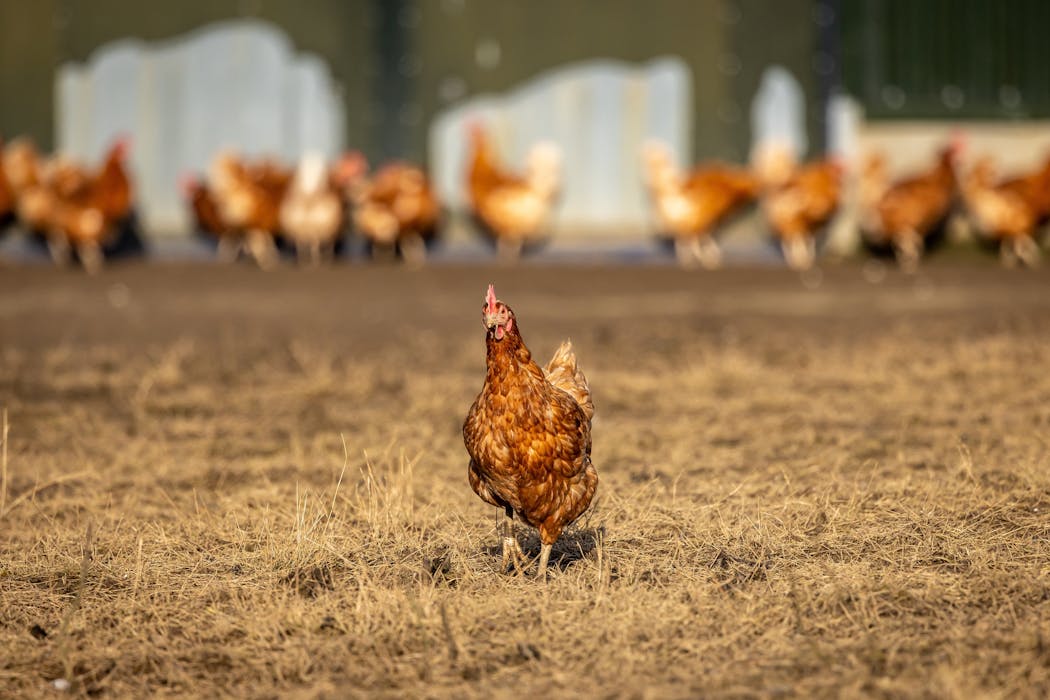
H5N1 bird flu has infected growing numbers of people worldwide in recent years, but this week saw something new: the first recorded human case of an H5N5 avian influenza virus. What is this virus and how concerned about it should we be?
What happened?
In early November, a resident of Grays Harbor, a county on the south-west Pacific coast of Washington state about 100 miles from Seattle, became severely unwell with flu-like symptoms including high fever, respiratory distress and confusion.
They were admitted to hospital, and on November 14 officials confirmed that tests showed infection with an H5N5 avian influenza virus. The patient, an older adult with underlying conditions, was treated in hospital, but sadly they died on November 21.
This was the first reported human infection with an H5N5 influenza virus.
What is H5N5 influenza virus?
H5N5 influenza viruses are a type of avian influenza (bird flu) – an influenza A virus that infects birds.
Bird flu viruses are classified as either “high pathogenicity” or “low pathogenicity” based on the severity of symptoms they cause in poultry. (Their severity also varies in other bird species.) This H5N5 strain, like the widespread and much-reported-on H5N1 strain, is one of the high pathogenicity forms.
Where did it come from?
This hasn’t yet been formally confirmed. However, the patient kept a flock of backyard poultry that were exposed to wild birds, which suggests how they might have caught the virus.
H5N5 is found in wild birds around the world, and it is relatively common for it to pass from them into flocks of poultry. This is, however, the first time an H5N5 influenza virus has been found to go one step further and infect a human.
What does the name mean? Is it similar to H5N1?
Influenza A viruses are one of the major branches of the influenza virus family, and are divided into subtypes based on differences in the two proteins that form spikes on the surface of virus particles: haemagglutinin (HA) and neuraminidase (NA).
Both proteins are good targets for the immune system’s antibodies. The proteins rapidly mutate as the virus evolves to evade these antibodies, and the different forms that result are used to categorise influenza A viruses.
The bird flu viruses H5N1 and H5N5 both have HA proteins of the same H5 subtype (though recognisably distinct from each other), but have NA proteins of different subtypes. Just as humans can be infected by different influenza A virus subtypes during the same winter season (H1N1 and H3N2), genetic studies show us this H5N5 virus is distinct from the dominant H5N1 strain that is also circulating in birds worldwide.
Should we be worried about what happens next?
H5N5 is an ecological and agricultural threat. Although bird flu vaccines exist, at the moment, political and economic factors make it hard to use them in US poultry. Instead, the virus must be controlled by surveillance, housing poultry indoors, increasing farm biosecurity and, as a last resort, by mass culling of infected poultry.
This is challenging enough, but bird flu also demands our attention because the virus is a potential cause of new pandemics.
In the long run, this risk is very significant. However, it is worth remembering that, although influenza is better at changing its host species and creating pandemics than any other virus, that is still an incredibly hard thing for the virus to do.
The vast majority of “spillover” infections of bird flu into humans are one-off events. They can vary unpredictably in their effects. Most are quite mild (for example, causing conjunctivitis), but some can be very severe, as was the case in this first recorded case of H5N5. But after infecting one human, most avian influenza viruses go no further.
Scientists will watch for several warning signs that a virus may be adapting to humans, especially any hint of person-to-person spread. There is no sign that this has happened here.
At the moment, the wider risk to humans from H5N5 is still low, and there is no reason to think this was anything other than a tragic one-off case. However, there will be plenty of opportunities for influenza viruses to try again. As H5N5 and other subtypes of avian influenza virus continue to circulate, it is important we continue to monitor this virus carefully.
This article is republished from The Conversation, a nonprofit, independent news organization bringing you facts and trustworthy analysis to help you make sense of our complex world. It was written by: Ed Hutchinson, University of Glasgow
Read more:
- Scary-sounding new virus in the news? Here are the questions you should ask
- Silent but not serene: what science says about nitrogen death
- Inquiry says COVID lockdowns could have been avoided – they’re right
Ed Hutchinson receives funding from UKRI and the Wellcome Trust. He has unpaid positions as a board member of the European Scientifiic Working group on Influenza (ESWI), as Chair-Elect of the Microbiology Society's Virus Division and as a scientific advisor to Pinpoint Medical.


 The Conversation
The Conversation
 IFL Science
IFL Science Scientific American Health
Scientific American Health 11Alive
11Alive America News
America News Law & Crime
Law & Crime CNBC
CNBC Associated Press US News
Associated Press US News Daily Voice
Daily Voice Associated Press Entertainment Video
Associated Press Entertainment Video CBS News
CBS News Los Angeles Times Opinion
Los Angeles Times Opinion